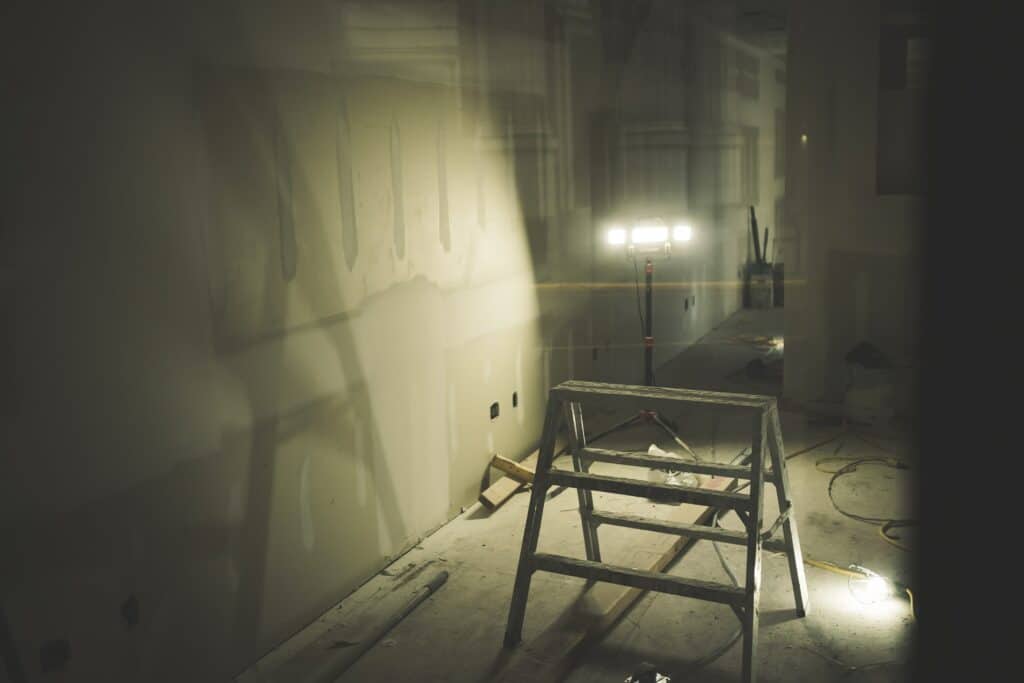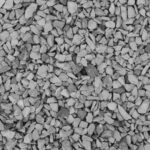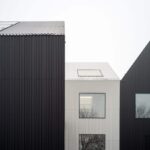The best choice between wood paneling and drywall often depends on personal style, time, and money. Although it’s common practice to put paneling over drywall, each material has its own pros and cons when compared with the other.
In some cases, however, paneling and drywall comprise a corresponding pair rather than separate and exclusive options. Understanding the facts about drywall vs. wood paneling will give you the confidence to settle on the right choice for your home or project.
Table of Contents
Wood Paneling Vs Drywall: Overview
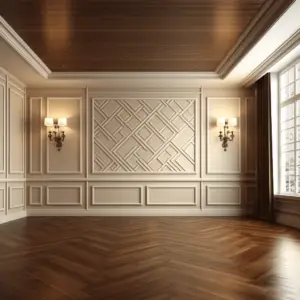
Drywall
Drywall, also referred to as wallboard is a large rigid sheet of finish material utilized in construction to face the interior walls of the dwelling. In other words, it is a material used to construct walls and ceilings in a home.
Drywall is basically made of a gypsum plaster sandwich in between two sheets of thicker paper. That means it can be adhered to metal or wood studs using nails or screws. It is generally easy to install and durable. And in the event that it gets damaged, it is also easy to repair.
The Cost of Installing Drywall
On average the price of drywall and sheetrock is $15 per four-foot eight-foot panel. The price can vary from $12-$20 per panel based on where you live and where you’re purchasing from. This can add up to a cost of about $.40-$0.65 per square foot of drywall. So it’s safe to estimate that if you have a 200-square-foot room, you may end up spending $300-$500 on drywall.
Coming down to installation, the cost to have drywall professionally installed can range from $1-$3 per square foot. The actual price will vary depending on the job, the conditions, and the finish options you opt for. On average, you can estimate that a 200 square-foot room would cost you $300-$400 for installation.
Types of Drywall
There are various types of drywall. The best option for you will depend on your area of application.
Regular Drywall
This is the most popular type of drywall. Regular drywall is usually white on one side and brown on the other side. It is available in a variety of thicknesses ranging from three-eighths of an inch to an inch. In most cases, the panels measure four feet by eight feet. They are ideal for walls, ceiling, and finishing basements.
Mold Resistant
Also known as green board drywall, mold-resistant drywall has a green covering that makes it more resistant to moisture compared to regular drywall.
It comes with paperless backing and a special coating that keeps it from accumulating mold. It is ideal for use in bathrooms and kitchens. However, it’s important to note that it is not waterproof and it costs a little more than regular drywall.
Sound Dampening Drywall
Sound dampening drywall features the same thickness as regular drywall, but it’s layered. There’s a quarter-inch layer of gypsum in between the back and front followed by a membrane and then another layer of quarter-inch gypsum.
This helps to dampen sound transmission between rooms, making it suitable for places you want to make a little quieter.
Fire Resistant
Fire-resistant drywall is made with glass fiber alongside an extra thick design. It combats the speed and spread of fire and generates less smoke compared to traditional drywall.
It also enhances sound control and is involved in some building codes. Its can be used for utility rooms, garages, and restaurants neat a furnace, woodstove, and fireplace.
Moisture Resistant
Similar to mold-resistant drywall, moisture resistance comes with a paperless backpacking and an additional coating that keeps it from developing mold in moist or humid conditions.
It is suitable for areas that are prone to moisture and humidity. That means you can use it for bathrooms, kitchens, laundry, basements, and utility rooms.
Drywall Advantages
Drywall began replacing plaster as the common covering after the 1930s, largely due to its faster installation. The composition of dried gypsum mineral and crystallized water grants drywall one remarkable benefit in home construction: fire resistance.
According to experts, water makes up 21% drywall and 50% of its volume. Therefore, drywall can help a fire from spreading. Moreover, the gypsum in drywall absorbs sound effectively, making it an ideal choice for quieter places.
Drywalls also resist fracturing and it’s quite easy to repair with patching compounds if damaged. Besides, its paper surface makes it compatible with multi surfaces such as wallpaper and paint.
Drywall Disadvantages
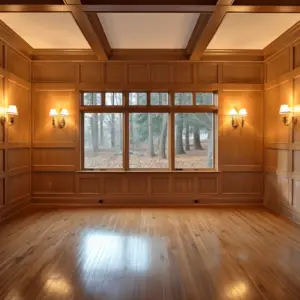
The mineral-water combination that makes drywall helpful also has some downsides such as heavier weight. For instance, a 4-by-8 foot panel of half-inch-thick drywall can weigh about 54 pounds.
These panels are typically obtained in two-sheet bundles. So to be on the safe side, at least two people should handle a bundle at a time. Furthermore, unless you invest extra time into painting or covering the drywall, the appearance it presents isn’t the most attractive either.
Wood Paneling
For most people, the idea of wood paneling carries extensive associations of 4-foot by 8-foot fake wood panels from lumber and mill. Basically, it’s the type of panels that were nearly all over in homes during the 1960s and 1970s.
Today, wood paneling is now in vogue again, though in a modified form. It’s more like a jump backward over the cheap items of the 1970s, but with many modern improvements.
Wood Paneling Advantages
Wood paneling can provide a room with a finished, natural look and a warmer feel. It’s generally easy to cut and trim for a desired professional-looking finish. There are two main wood paneling options: board paneling and sheet paneling, with the sheet option being considered less expensive.
The board paneling option, according to experts, offers authentic wood tones and compensates for the higher costs in both material and labor.
Paneling Disadvantages
Due to the greater attention needed for cutting and trimming wood, paneling is likely to take more time and costs compared to just installing drywall. It also doesn’t work as a sound barrier as the way drywall does.
Therefore, in a workshop, installing wood paneling can produce a noisy and uncomfortable atmosphere. The darker shades in wood may also bring a more closed-in, cave-like feeling in comparison to drywall’s light-reflective character.
Even so, wood paneling and drywall sometimes go well together. One common combo option involves installing drywall covered with wood paneling, thereby reaping the advantages of both.
